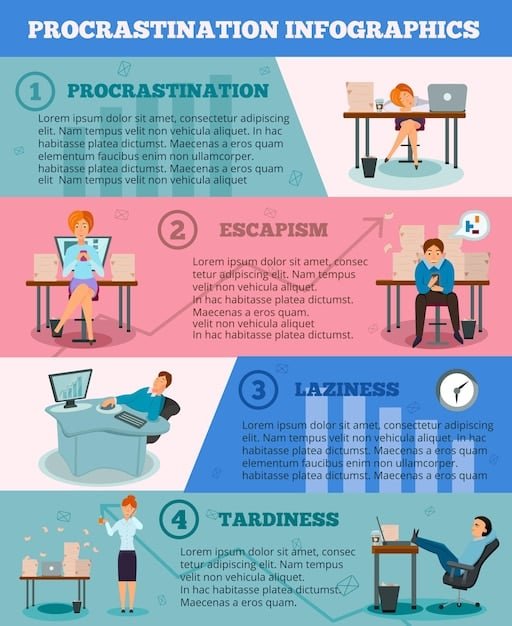Claiming Home Office Deductions in 2025: A Comprehensive Guide

Claiming home office deductions in 2025 involves understanding updated IRS guidelines, eligibility criteria, and the methods for calculating deductible expenses, ensuring taxpayers maximize their benefits while remaining compliant with tax laws in the U.S.
Navigating the world of tax deductions can be complex, especially when it comes to claiming expenses for your home office. As we approach 2025, it’s crucial to understand the latest updates and eligibility requirements for claiming home office deductions in 2025: what’s changed and how to qualify. This guide will provide you with a comprehensive overview, ensuring you maximize your tax benefits while staying compliant with IRS regulations.
Understanding the Home Office Deduction
The home office deduction allows eligible taxpayers to deduct expenses related to the business use of their home. This can include costs for mortgage interest, insurance, utilities, and depreciation. However, not everyone qualifies, and it’s essential to meet specific criteria to avoid potential issues with the IRS.
What is a Qualifying Home Office?
To qualify for the home office deduction, the space must be used exclusively and regularly for business. This means the area is used only for business purposes and is your principal place of business.
Principal Place of Business
A key aspect of eligibility is that your home office serves as your principal place of business. This definition includes locations where you meet with clients or patients in the normal course of business, even if you conduct business activities elsewhere.

- Exclusive Use: The area must be used solely for business.
- Regular Use: The space must be used regularly for business activities.
- Principal Place of Business: Your home office should be where you conduct the majority of your business.
Understanding these fundamental requirements is the first step in successfully claiming your home office deduction. Meeting these criteria is essential to avoid any complications with the IRS.
Key Changes for 2025
Tax laws and regulations are constantly evolving, and 2025 is expected to bring some changes to the home office deduction. Staying informed about these updates is crucial for accurate tax planning.
Potential Legislative Updates
While specific legislative changes for 2025 are not yet finalized, it’s important to monitor any announcements from the IRS or Congress. Tax laws can change based on economic conditions and policy decisions.
Impact of Economic Factors
Economic factors such as inflation and interest rates can indirectly affect the home office deduction. For example, changes in mortgage interest rates can impact the amount you can deduct.
Keeping an eye on these potential changes and understanding their implications will help you prepare and adjust your tax strategies accordingly. Always consult with a tax professional for personalized advice.
Eligibility Requirements for the Home Office Deduction
Meeting the IRS’s eligibility requirements is paramount to successfully claiming the home office deduction. Let’s delve deeper into the specific criteria you need to meet.
Self-Employed Individuals
Self-employed individuals are often eligible for the home office deduction if they meet the exclusive and regular use tests. This includes freelancers, independent contractors, and small business owners.
Employees Working from Home
For employees, claiming home office deductions in 2025: what’s changed and how to qualify may be more complex. Prior to the Tax Cuts and Jobs Act of 2017, employees could deduct home office expenses if their work from home arrangement was for the convenience of their employer. However, this deduction has been suspended for tax years 2018 through 2025. It’s important to note that this could change, so staying informed is critical.

To ensure eligibility, you must meet specific tests:
- The Exclusive Use Test: The area must be used exclusively for business purposes.
- The Regular Use Test: You must use the space regularly for business activities.
- Principal Place of Business Test: The home office must be your primary place of business.
Carefully assessing whether you meet these requirements is essential before claiming the deduction. Failure to comply can lead to penalties and interest from the IRS.
Calculating the Home Office Deduction
Once you’ve determined your eligibility, the next step is to calculate the amount of your home office deduction. There are two primary methods: the simplified method and the regular method.
The Simplified Method
The simplified method allows you to calculate your deduction by multiplying a prescribed rate (currently $5 per square foot) by the allowable square footage of your home office, up to a maximum of 300 square feet. This method is straightforward and requires less record-keeping.
The Regular Method
The regular method involves calculating the actual expenses related to your home office, such as mortgage interest, rent, utilities, insurance, and depreciation. You can deduct the portion of these expenses that relate to the business use of your home.
Here are some factors to consider when choosing a calculation method:
- Square Footage: Determine the square footage of your home office.
- Direct Expenses: Include expenses directly related to your home office.
- Indirect Expenses: Allocate a portion of indirect expenses, like utilities and insurance.
Choosing the right method depends on your individual circumstances and the complexity of your expenses. The simplified method is easier, but the regular method may result in a larger deduction if you have significant home-related expenses.
Record-Keeping Best Practices
Maintaining accurate records is crucial for substantiating your home office deduction. Proper documentation can help you avoid issues during an IRS audit.
Types of Records to Keep
Keep records of all expenses related to your home office, including receipts, invoices, and bank statements. Also, document the square footage of your home office and its usage.
Using Technology for Record-Keeping
Consider using accounting software or apps to track your expenses and manage your records. These tools can help you stay organized and ensure you have the necessary documentation when filing your taxes.
Effective record-keeping strategies include:
- Expense Tracking: Maintain a detailed log of all home office expenses.
- Digital Documentation: Scan and save receipts and invoices electronically.
- Regular Updates: Update your records regularly to avoid missing any information.
By following these best practices, you can ensure you have the necessary documentation to support your home office deduction and avoid potential problems with the IRS.
Common Mistakes to Avoid
Many taxpayers make common mistakes when claiming the home office deduction. Avoiding these errors can help you ensure compliance and maximize your tax benefits.
Mixing Personal and Business Use
One of the biggest mistakes is using the home office for personal activities. Remember, the space must be used exclusively for business purposes to qualify for the deduction.
Incorrectly Calculating Square Footage
Another common mistake is miscalculating the square footage of the home office. Ensure you measure the space accurately to avoid overstating your deduction.
Here are some potential pitfalls to watch out for:
- Overstating Expenses: Only deduct legitimate business expenses.
- Ignoring Eligibility Requirements: Ensure you meet all the IRS requirements.
- Failing to Keep Records: Maintain accurate and complete records of all expenses.
By being aware of these common mistakes and taking steps to avoid them, you can ensure you accurately and legally claim your home office deduction.
Seeking Professional Advice
Navigating tax laws and regulations can be complex, making it beneficial to seek professional advice from a qualified tax advisor or accountant.
When to Consult a Tax Professional
Consider consulting a tax professional if you have complex business arrangements, significant home-related expenses, or if you’re unsure about any aspect of the home office deduction.
Benefits of Professional Guidance
A tax professional can provide personalized advice tailored to your specific circumstances, help you optimize your tax strategy, and ensure you comply with all IRS regulations.
Key advantages of seeking professional advice include:
- Personalized Strategies: Tailored advice based on your unique situation.
- Tax Optimization: Maximizing your deductions and minimizing your tax liability.
- Compliance Assurance: Ensuring you meet all IRS requirements.
Seeking professional advice can provide peace of mind and help you make informed decisions about your taxes.
| Key Point | Brief Description |
|---|---|
| 🏠 Eligibility Criteria | Meeting the exclusive and regular use tests. |
| 🧮 Calculation Methods | Using the simplified or regular method to calculate deductions. |
| 🧾 Record-Keeping | Maintaining accurate records of expenses and usage. |
| 💼 Professional Advice | Consulting a tax professional for personalized guidance. |
Frequently Asked Questions (FAQ)
▼
Exclusive use means that the specific area of your home is used solely for business purposes. It cannot be used for personal activities at any time during the year.
▼
Yes, you can still deduct expenses if you work from home part-time, as long as you meet the regular and exclusive use tests. The deduction will be based on the percentage of your home used for business.
▼
The simplified method uses a standard rate per square foot, while the regular method involves calculating actual expenses related to your home office, such as mortgage interest and utilities.
▼
You should keep records of all expenses related to your home office, including receipts, invoices, bank statements, and documentation of your home office’s square footage and usage.
▼
If you own your home, you can deduct depreciation for the portion of your home used for business. You’ll need to calculate the depreciable basis of your home and allocate a portion to the business use.
Conclusion
Understanding the nuances of claiming home office deductions in 2025: what’s changed and how to qualify, is crucial for maximizing tax benefits. By staying informed about potential legislative updates, meeting eligibility requirements, choosing the right calculation method, maintaining accurate records, and avoiding common mistakes, you can confidently navigate the complexities of the home office deduction and ensure compliance with IRS regulations. Seeking professional advice when needed can further enhance your tax strategy and provide peace of mind.





